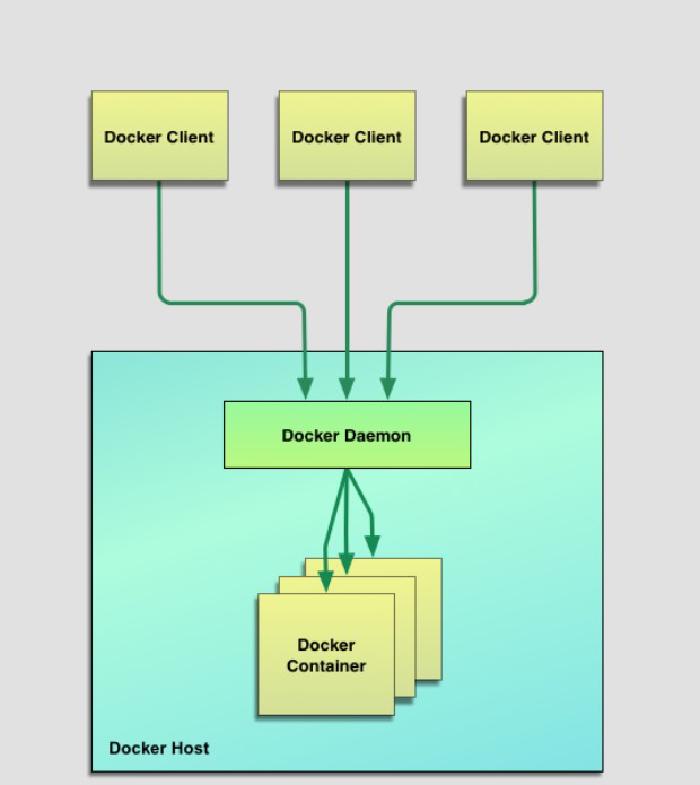Docker resources
The core components that compose Docker will now be briefly explained.
The Docker client and server
Docker is a server-client application. The Docker client
communicates with the Docker server or daemon, which then
completes the task. Docker comes with a docker command-line client
binary and a full RESTful API. It’s possible to run the Docker daemon
and client on the same machine or connect the local Docker client to a
remote Docker daemon on a different machine.The figure shows
a diagram of Docker’s architecture:

Docker images
The foundation of the Docker world is images. All Docker containers are launched from images. Images are the “build” part of Docker’s life cycle. They are a layered format that is built step-by-step using Union file systems and a set of instructions.
Registries
Docker stores of the images in registries. Public and private registries are the two types of registries. Docker, Inc. manages the Docker Hub registry, which is a public image registry. The Docker Hub also has over 10,000 images that other people or organizations have created and shared.
Containers
Containers are launched from images and can contain one or more running processes. If images are the building or packing aspect of Docker, the containers represent the running or execution aspect. Each container contains a software image – its ’cargo’ – and, like its physical counterpart, allows a set of operations to be performed. For example, it can be created, started, stopped, restarted, and destroyed.